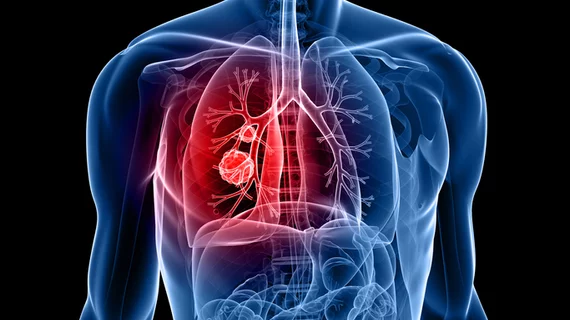Radiologist-delivered ablation for lung cancer costs significantly less than surgery, but utilization still low
Imaging-guided, radiologist-delivered ablation to treat lung cancer costs significantly less than surgery, but utilization remains uniformly low, experts charged in a new study published Saturday.
Improvements in screening for America’s No. 1 cancer killer have led to increased detection of, and survival from, early stage non-small cell lung carcinoma. Surgical resection of the tumor is standard, with radiation therapy an alternative for inoperable cases, researchers explained in Academic Radiology.
Imaging-guided percutaneous ablation—using real-time CT and a probe to freeze or heat the tumor—has emerged as another option, given radiation therapy’s lower cancer-survival outcomes compared to surgery. Ablation produces lower mortality rates than radiation therapy and costs less for the first year of therapy. Yet less than 1% of Medicare patients receive this radiologist-delivered treatment compared to nearly one-third for radiotherapy, an investigation of historical data discovered.
“Given the likelihood that cost effectiveness will have a growing role in guiding future healthcare coverage and reimbursement policies, the economic implications of treatment modalities should also be considered in the treatment of early-stage [non-small cell lung carcinoma],” corresponding author Nima Kokabi, MD, with the Division of Interventional Radiology and Image-Guided Medicine at Emory University in Atlanta, and colleagues wrote Aug. 14.
For their study, Kokabi et al. tapped the Medicare-linked Surveillance, Epidemiology, and End Results database using figures from 2006-2016. They identified a total of 15,847 patients treated for this form of lung cancer, with 75.5 the average age at diagnosis. Nearly 68% underwent only surgery; almost 32% received only radiotherapy, and 0.6% ablation. Use of both surgery and ablation decreased between 2007 to 2015 while radiotherapy climbed.
Survival rates were higher for patients in the surgery group (hazard ratio of 0.7) when compared to ablation, but lower among those treated with radiation (1.4). Meanwhile, the average first-year cost of therapy landed at $11,975 for ablation, followed by radiotherapy ($15,447) and surgery ($22,669). Ablation also has other perceived advantages: Patients may prefer its minimally invasive nature, the authors added, and it can still be performed after failed treatment with the other modalities.
“With evolving patient preferences for minimally invasive procedures and economic costs influencing treatment options, a multidisciplinary approach including interventional radiology, radiation oncology, and surgery should be taken when deciding the optimal treatment plan for each individual patient,” the authors advised. “Comparable overall survival outcomes with other treatment modalities warrants larger prospective randomized studies in patients with stage I NSCLC.”

